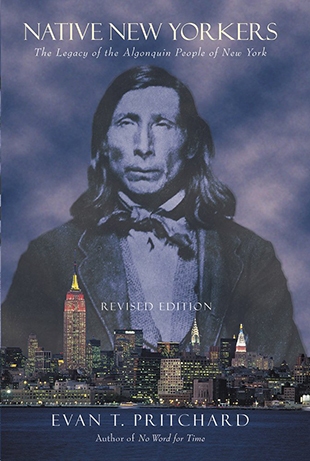Evan Pritchard is a Marist College Native American history professor and founder of The Center for Algonquin Culture. In his book No Word for Time, he gave us a lyrical and spiritually deep summation of Algonquin myth, history, and philosophy. It is one of the best books on Native American spirituality around.
In Native New Yorkers, Pritchard offers a first-class guide to Indian landmarks and historical sites in three locations: New York City, the Hudson Valley, and Long Island. For anyone living in these places, the author has provided a glimpse of the past when Native Americans shaped the geography of America with their culture, customs, language, and communal life.
Prichard makes the most of archival material and interviews with contemporary leaders of the Algonquin nations. For those of us living in Manhattan it is a treat to learn some of the names it was given; to discover that a great nation existed here a thousand years before Columbus; and to read about it as home to "enlightened masters." We learned, for example, that what is now Broadway, the only street that runs as an angle through the grid of Manhattan, was originally the Mohican Trail, and that four blocks from our home, there was once a shady forested area in which there was a Lenape trading post for pelts of otter, rabbit, fox, bear, and deer; today the garment district's fur district is only a few blocks away.
This incredibly detailed and imaginatively presented survey of life in New York City, the Hudson Valley, and Long Island before the Europeans arrived tutors us in the spiritual practice of truly cherishing the place where we live.
Pritchard takes us beyond the contemporary gap between the rich and the poor in Manhattan to ponder the ecological legacies of the original Native New Yorkers. He includes original maps and locates sacred sites, burial grounds, horticultural practices, rituals and ceremonies, lodge-building, and a timeline of New York's Algonquin history. After reading Native New Yorkers, we felt closer than ever to the heartbeat of our city, its rich multicultural heritage, and the special piece of Earth on which we live.
